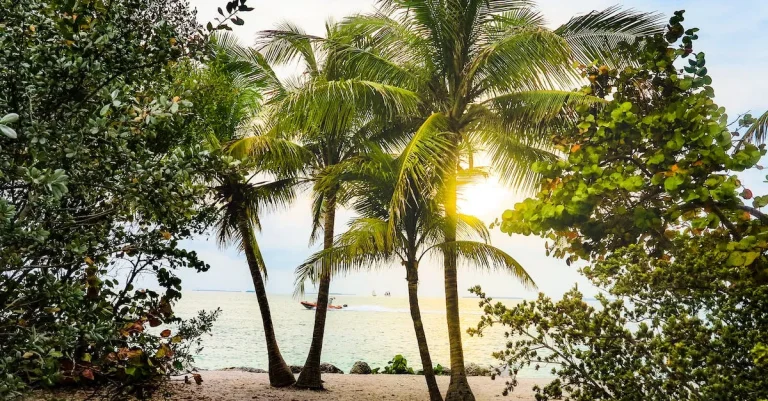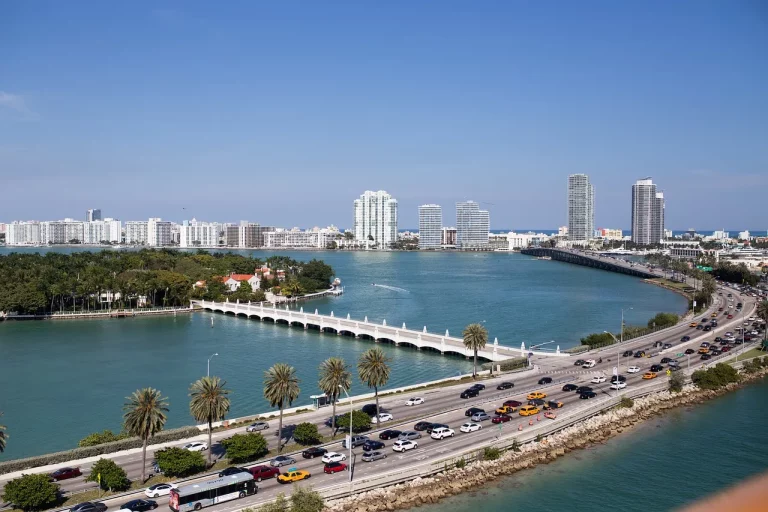The Diverse Landscapes And Scenery Of Texas
Texas is a massive state spanning over 260,000 square miles, and its diverse landscapes contain everything from rugged mountains to lush forests to arid deserts. If you’re short on time, here’s a quick answer: Texas has distinct geographic regions including plains, hills, mountains, and deserts as well as forests, swamps, rivers, lakes, and coastlines along the Gulf of Mexico. Read on to learn about the varied natural scenery and environments found across the Lone Star State.
In this comprehensive guide, we will explore the diverse ecosystems and geographic features found across Texas. We will cover the major landforms, bodies of water, vegetation zones, and climate regions that contribute to the state’s varied scenery. Whether you are looking to understand the landscapes of Texas for planning a trip or just to satisfy your curiosity, this article will provide an in-depth overview of what the sprawling landscapes of Texas look like.
The Great Plains
The Great Plains region of Texas is characterized by vast open spaces, rolling hills, and expansive grasslands. It covers a significant portion of the state and is known for its diverse landscapes and breathtaking scenery. Let’s explore some of the subregions within the Great Plains:
Panhandle Plains
The Panhandle Plains region, located in the northernmost part of Texas, is famous for its wide-open spaces and beautiful sunsets. It is home to iconic landmarks such as Palo Duro Canyon, often referred to as the “Grand Canyon of Texas.”
This region also offers a unique blend of prairies, canyons, and mesas that provide an awe-inspiring backdrop for outdoor enthusiasts and nature lovers.
North Central Plains
The North Central Plains region is characterized by gently rolling hills, lush pastures, and picturesque rivers. It is an ideal destination for those seeking outdoor adventures like fishing, hiking, and camping.
The region is also home to several charming small towns that offer a glimpse into Texas’ rich history and culture.
Edwards Plateau
The Edwards Plateau, also known as the Texas Hill Country, is renowned for its stunning natural beauty and diverse ecosystems. This region is famous for its rugged limestone hills, clear-flowing rivers, and enchanting spring wildflowers.
Visitors can explore numerous state parks, such as Enchanted Rock and Garner State Park, which offer opportunities for hiking, swimming, and wildlife spotting.
Blackland Prairies
The Blackland Prairies region, located in central Texas, is characterized by its fertile soil and rich agricultural heritage. This area is known for its expansive grasslands, dotted with picturesque farms and ranches.
The region’s unique blend of prairies and woodlands makes it a haven for birdwatchers and nature enthusiasts.
Grand Prairie
The Grand Prairie region, situated between the Blackland Prairies and the West Cross Timbers, offers a diverse range of landscapes. It is home to vast stretches of open prairies, scenic rivers, and dense forests.
Visitors can enjoy activities such as wildlife viewing, fishing, and boating in the numerous lakes and reservoirs scattered throughout the region.
Central Basin
The Central Basin region, also known as the Permian Basin, is famous for its vast oil fields and rugged desert landscapes. This region has played a significant role in Texas’ oil industry, making it an essential part of the state’s history and economy.
Visitors can explore the unique geological formations, such as the Guadalupe Mountains, or learn about the region’s oil heritage in museums and cultural centers.
Mountains and Basins
Texas is known for its diverse landscapes and scenic beauty, and one of the most captivating features of the state is its mountains and basins. These natural wonders offer breathtaking views and unique experiences for outdoor enthusiasts and nature lovers.
Trans-Pecos Mountains
The Trans-Pecos Mountains, located in the westernmost part of Texas, are a sight to behold. They are part of the larger Rocky Mountains system and showcase stunning peaks and rugged terrain. The region is home to the iconic Big Bend National Park, where visitors can explore the Chisos Mountains and take in the awe-inspiring vistas of the Rio Grande.
Davis Mountains
The Davis Mountains, situated in West Texas, are another must-visit destination for mountain lovers. These mountains are part of the picturesque Davis Mountains State Park, offering visitors a chance to hike, camp, and stargaze in one of the darkest skies in the state.
The scenic Skyline Drive provides a panoramic view of the surrounding valleys and peaks, making it a favorite spot for photographers.
Guadalupe Mountains
The Guadalupe Mountains, located in the western part of the state, are a hiker’s paradise. Home to Guadalupe Mountains National Park, this range boasts the highest peak in Texas, Guadalupe Peak, standing at an impressive 8,749 feet.
Hikers can tackle challenging trails, such as the Guadalupe Peak Trail, and be rewarded with breathtaking views of the surrounding desert and canyons.
Delaware Basin
The Delaware Basin, situated in West Texas and southeastern New Mexico, is a geological marvel. It is part of the larger Permian Basin, one of the most significant oil-producing regions in the United States. The basin features unique geological formations, including sinkholes and underground caves.
Visitors can explore the Carlsbad Caverns National Park, which offers guided tours to witness the stunning stalactites and stalagmites.
Chihuahuan Desert
The Chihuahuan Desert, stretching across parts of Texas, New Mexico, and Mexico, is the largest desert in North America. It is characterized by its rugged beauty, with vast expanses of desert plains, rolling hills, and unique desert flora and fauna.
Visitors can explore the stunning landscapes of the Chihuahuan Desert Nature Center and Botanical Gardens, which provides educational exhibits and trails to learn more about this remarkable ecosystem.
Whether you’re a fan of hiking, camping, photography, or simply appreciating the beauty of nature, the mountains and basins of Texas offer something for everyone. Plan your next adventure and immerse yourself in the diverse landscapes and scenery that make Texas truly unique.
Forests and Wetlands
Texas is home to a diverse range of landscapes and scenery, including stunning forests and wetlands. These natural habitats provide a haven for a wide variety of plant and animal species, making them an important part of the state’s ecosystem.
Piney Woods
The Piney Woods region of Texas is characterized by its lush forests, towering pine trees, and abundant wildlife. Stretching across the eastern part of the state, this area is a paradise for nature lovers and outdoor enthusiasts.
Hiking trails wind through the dense forest, offering breathtaking views of the towering trees and peaceful streams. The Piney Woods is also home to several rare and endangered species, including the red-cockaded woodpecker and the Houston toad.
Gulf Coastal Plains
The Gulf Coastal Plains region of Texas is known for its scenic beauty and diverse ecosystems. This area is characterized by its expansive wetlands, marshes, and coastal prairies. Visitors can explore the picturesque marshes and spot a variety of bird species, including herons, egrets, and pelicans.
The Gulf Coastal Plains also provide important breeding grounds for marine life, including shrimp, oysters, and fish. It’s a great place to experience the unique beauty of Texas’s coastal wetlands.
Cypress Swamps
Tucked away in the southeastern part of Texas, you’ll find the enchanting cypress swamps. These wetlands are characterized by their towering cypress trees, draped with Spanish moss, and their winding waterways.
Exploring the cypress swamps by boat or kayak is a popular activity, allowing visitors to immerse themselves in the serene beauty of this unique ecosystem. Keep an eye out for alligators, turtles, and a variety of bird species that call the cypress swamps home.
Bottomland Hardwood Forests
The bottomland hardwood forests of Texas are a vital part of the state’s natural landscape. These forests are found along the rivers and floodplains of Texas, providing important habitats for a wide range of wildlife.
The trees in these forests, including oaks, maples, and elms, create a stunning canopy overhead, while the forest floor is home to a variety of wildflowers and ferns. Exploring the bottomland hardwood forests offers a chance to witness the cycle of life and the interconnectedness of nature.
For more information on the diverse landscapes and scenery of Texas, visit https://tpwd.texas.gov/.
Rivers, Lakes and Coastline
Texas is known for its diverse and breathtaking landscapes, and its rivers, lakes, and coastline are no exception. The state boasts an impressive network of waterways that offer not only recreational opportunities but also stunning natural beauty.
Rio Grande
The Rio Grande, which forms the border between Texas and Mexico, is one of the most iconic rivers in the state. Its rugged canyons and winding path provide a spectacular backdrop for outdoor enthusiasts.
Whether you’re interested in hiking, camping, or simply enjoying the scenic views, the Rio Grande offers something for everyone.
Red River
The Red River, which runs along the northern border of Texas, is another prominent waterway in the state. With its red-colored banks and picturesque bluffs, it offers a unique and captivating landscape.
The Red River is popular among fishing enthusiasts, as it is home to a wide variety of fish species.
Trinity River
The Trinity River, located in eastern Texas, is the longest river entirely within the state. It meanders through lush forests and scenic landscapes, making it a favorite destination for boating, kayaking, and birdwatching.
The Trinity River also plays a vital role in the state’s water supply, providing water for both agricultural and residential use.
Gulf Coast
The Texas Gulf Coast stretches over 350 miles, offering visitors a paradise of white sandy beaches, warm waters, and abundant wildlife. From the bustling city of Galveston to the tranquil beaches of South Padre Island, the Gulf Coast is a haven for beachgoers, fishermen, and nature lovers alike.
It is also an important habitat for various bird species and serves as a crucial stopover for migratory birds.
Bays and Barrier Islands
Along the Texas coastline, you’ll find a series of bays and barrier islands that add to the state’s natural beauty. These coastal features not only provide protection for the mainland but also offer unique ecosystems for exploration.
Places like Padre Island National Seashore and the Laguna Madre attract visitors with their pristine beaches, diverse wildlife, and opportunities for water sports.
For more information on Texas rivers, lakes, and coastline, you can visit the Texas Parks and Wildlife Department website or the Texas River Guide.
Conclusion
In summary, Texas contains a vast array of diverse natural environments and landscapes within its sprawling borders. From the Great Plains in the north to the Chihuahuan Desert in the west, forested swamps in the east and Gulf coast beaches in the southeast, the scenery across the Lone Star State is incredibly varied. The major landforms, bodies of water, vegetation zones and climate regions each contribute distinct features to different areas of Texas. With everything from mountains to prairies to wetlands contained within its borders, Texas offers an abundance of beautiful and unique natural scenery waiting to be explored.








